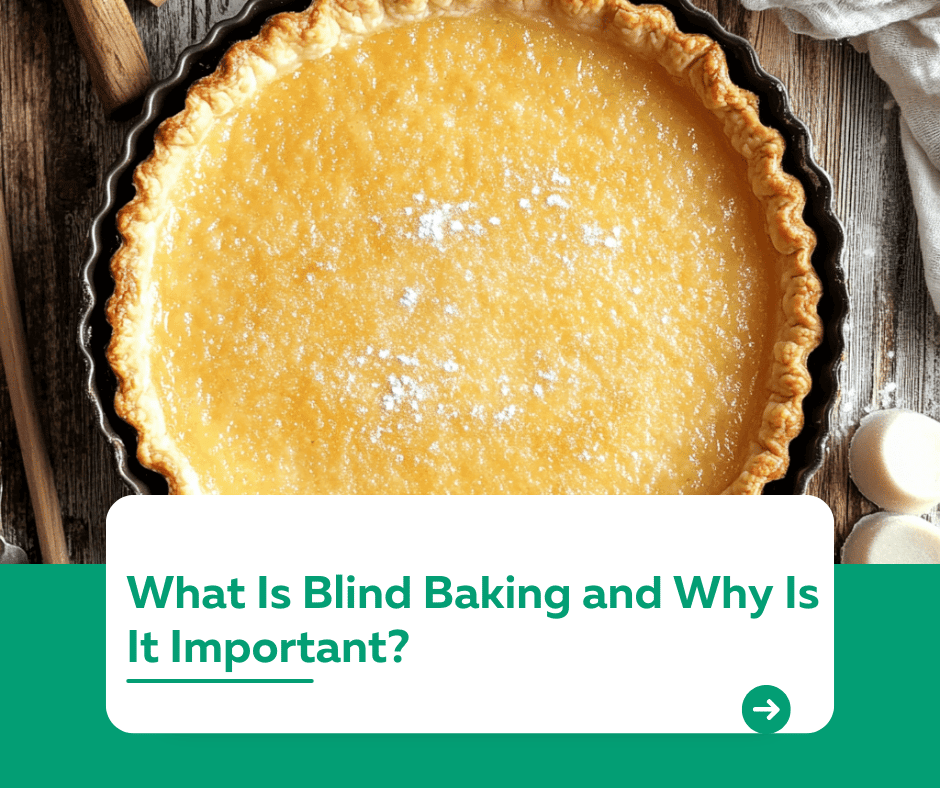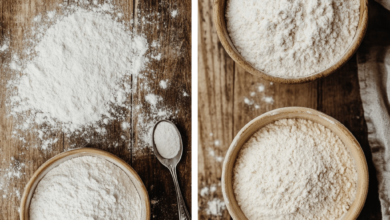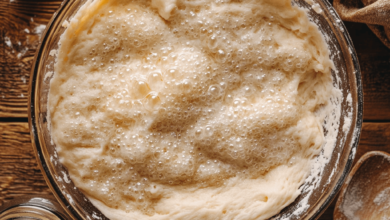What Is Blind Baking and Why Is It Important?

Introduction
“What is blind baking?”
Blind baking is a crucial technique in the world of pastry-making. It involves pre-baking a pie or tart crust without its filling to ensure it’s fully cooked and crisp. Whether you’re making a creamy custard pie or a tart with fresh fruit, blind baking prevents soggy crusts and ensures your dessert is a success. In this guide, we’ll explore what blind baking is, why it’s important, and how to do it like a pro.
1. What Is Blind Baking?
Blind baking is the process of baking a pie or tart crust partially or fully before adding the filling.
- When to Partially Blind Bake:
- For pies that will be baked again with the filling (e.g., quiches, pumpkin pie).
- When to Fully Blind Bake:
- For no-bake fillings like cream pies or fresh fruit tarts.
2. Why Is Blind Baking Important?
Blind baking ensures a crisp and fully cooked crust, which is essential for certain types of pies and tarts.
- Prevents Soggy Bottoms:
- Stops wet fillings from soaking into the crust.
- Ensures Even Cooking:
- Allows the crust to bake properly before adding fillings that cook at different rates.
- Improves Texture and Flavor:
- Creates a flaky, golden-brown crust that’s sturdy enough to hold fillings.
3. How to Blind Bake a Crust
Step 1: Prepare the Dough
- Roll out your pastry dough and fit it into your pie or tart pan.
- Trim the edges and crimp or decorate as desired.
Step 2: Chill the Dough
- Refrigerate the dough for 20–30 minutes to prevent shrinking during baking.
Step 3: Line and Weigh the Crust
- Place parchment paper or aluminum foil over the crust.
- Fill with pie weights, dried beans, or uncooked rice to prevent bubbling.
Step 4: Bake the Crust
- Preheat the oven to 375°F (190°C).
- Bake for 15–20 minutes until the edges are lightly golden.
Step 5: Remove the Weights
- Carefully lift the parchment or foil with the weights.
- Return the crust to the oven for an additional 5–10 minutes to dry the bottom.
Tip: For a fully baked crust, bake until the entire crust is golden brown.
4. Common Blind Baking Mistakes and How to Avoid Them
- Shrinking Crust:
- Chill the dough before baking and avoid stretching it while shaping.
- Burnt Edges:
- Use a pie shield or cover the edges with foil to prevent overbrowning.
- Uneven Baking:
- Distribute the weights evenly to ensure the crust bakes uniformly.
5. Bonus Tips for Blind Baking
- Use High-Quality Ingredients:
- Butter-based doughs often yield the best flavor and texture.
- Dock the Dough:
- Poke small holes in the bottom of the crust with a fork to prevent puffing.
- Invest in Pie Weights:
- Reusable pie weights provide better results than beans or rice.
Conclusion
Blind baking is a simple but essential technique that can make or break your pies and tarts. By pre-baking the crust, you ensure it’s crisp, golden, and perfectly cooked to complement your filling. With these tips, you’ll master the art of blind baking and elevate your pastry-making skills.
For more baking techniques and tips, visit our Kuestion.com.




